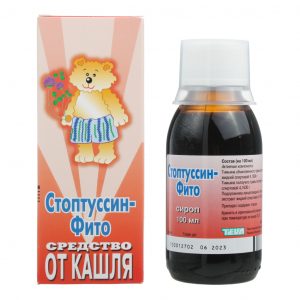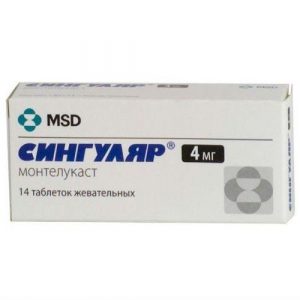Description
Latin name
Acetylcysteine Canon
Release form
Granules for oral solution.
Pharmacological action of
Mucolytic agent
Indications
Acetylcysteine is used to treat respiratory diseases, accompanied by the formation of viscous difficult to separate sputum:
acute and chronic bronchitis
obstructive bronchitis
tracheitis
laryngotracheitis
pneumonia
lung abscess
bronchitis
disease bronchitis
disease bronchitis
disease COPD)
acute and chronic sinusitis
inflammation of the middle ear (otitis media).
Contraindications
– Hypersensitivity to acetylcysteine and other components of the
preparation – Sucrose / isomaltase deficiency, fructose intolerance, glucose-galactose malabsorption
– Phenylketonuria
– 14 years old, for children up to 600 mg, up to 600 mg children under 6 years of age (for a dosage of 200 mg), children under 2 years of age (for a dosage of 100 mg)
– Pregnancy and the period of breastfeeding.
Caution
Bronchial asthma, liver and / or kidney failure, adrenal disease, varicose veins of the esophagus, hypertension, a tendency to pulmonary hemorrhage, hemoptysis, a history of gastric and duodenal ulcer, intolerance, long-term intolerance, drug intolerance since acetylcysteine affects histamine metabolism and can lead to signs of intolerance, such as headache, vasomotor rhinitis, itching).
Use during pregnancy and lactation
The use of the drug during pregnancy and lactation is contraindicated.
Special instructions
When treating patients with diabetes mellitus, it must be taken into account that the preparation contains sucrose (1 sachet of Acetylcysteine Canon 600 mg corresponds to 0.19 XE, 200 mg – 0.23 XE, 100 mg – 0.24 XE).
When working with the drug, use glassware, avoid contact with metals, rubber, oxygen, easily oxidized substances.
With the use of acetylcysteine, cases of the development of severe allergic reactions, such as Stevens-Johnson syndrome, toxic epidermal necrolysis (Lyell’s syndrome), have been very rarely reported. If changes in the skin and mucous membranes occur, you should immediately consult a doctor, you must stop taking the drug.
You should not take the drug immediately before bedtime (it is recommended to take the drug before 18.00).
Ingredients
1 packet of 100 mg contains:
active substance: acetylcysteine ??100 mg
excipients: strawberry flavor 9 mg, ascorbic acid 12.5 mg aspartame 15 mg, sucrose 2863.5 mg.
1 packet of 200 mg contains:
active substance: acetylcysteine ??200 mg
excipients: flavor strawberry 9 mg, ascorbic acid 25 mg, aspartame 20 mg, sucrose 2746 mg.
1 package with a dosage of 600 mg contains:
active substance: acetylcysteine ??600 mg
excipients: flavor strawberry 9 mg, ascorbic acid 75 mg, aspartame 30 mg, sucrose 2286 mg.
Dosage and Administration
Inside. Granules should be dissolved in water at room temperature and taken after meals.
Granules for solution for oral administration 100 mg, 200 mg.
Unless otherwise prescribed, the following dosages are recommended:
Mucolytic therapy.
Adults and adolescents over 14 years of age: It is recommended to take 2 sachets of the drug Acetylcysteine Canon 100 mg or 1 sachet of the drug Acetylcysteine Canon 200 mg 2-3 times a day (400-600 mg per day).
For children aged 6 to 14 years: it is recommended to take 1 sachet 3 times a day or 2 sachets 2 times a day with Acetylcysteine Canon 100 mg (300-400 mg per day). The drug Acetylcysteine Canon 200 mg should be taken in 1/2 sachet 3 times a day or 1 sachet 2 times a day (300-400 mg per day).
For children aged 2 to 6 years: it is recommended to take 1 sachet of the drug Acetylcysteine Canon 100 mg 2-3 times a day (200-300 mg per day).
Cystic fibrosis.
Children over 6 years of age: It is recommended to take 2 sachets of the drug Acetylcysteine Canon 100 mg or 1 sachet of the drug Acetylcysteine Canon 200 mg 3 times a day (600 mg per day).
Children aged 2 to 6 years: it is recommended to take 1 sachet of the drug Acetylcysteine Canon 100 mg 4 times a day (400 mg per day). For patients with cystic fibrosis and a body weight of more than 30 kg, if necessary, a dose increase of up to 800 mg of acetylcysteine per day is possible.
The additional intake of fluid enhances the mucolytic effect of the drug. With short-term colds, the duration of administration is 5-7 days. With long-term illnesses, the duration of therapy is determined by the attending physician. In chronic bronchitis and cystic fibrosis, the drug should be taken for a longer time to achieve a preventive effect in infections.
Side effects
According to the World Health Organization (WHO), unwanted effects are classified according to their frequency of development as follows: very often (? 1/10) often (? 1/100 and
Allergic reactions: infrequently – skin itching, rash , exanthema, urticaria, angioedema, lowering blood pressure, tachycardia is very rare – anaphylactic reactions up to anaphylactic shock, Stevens-Johnson syndrome, toxic epidermal necrolysis (Lyell’s syndrome).
From the nervous Istemi: very rarely – headache
Cardio-vascular system:. very rare – decrease in blood pressure, increased heart rate (tachycardia)
Respiratory system:. rarely – shortness of breath, bronchospasm (mainly in patients with bronchial hyperreactivity in asthma).
From the gastrointestinal tract: infrequently – stomatitis, abdominal pain, nausea, vomiting, diarrhea, heartburn, dyspepsia.
From the sensory organs: infrequently – tinnitus.
Other: very rare – fever, isolated reports of the development of bleeding due to the presence of hypersensitivity reactions, decreased platelet aggregation.
Drug interaction
With the simultaneous use of acetylcysteine and antitussive agents due to suppression of the cough reflex, mucus congestion may occur. Therefore, such combinations should be selected with caution.
Pharmaceutically incompatible with antibiotics (penicillins, cephalosporins, erythromycin, tetracycline and amphotericin B) and proteolytic enzymes.
Reduces the absorption of penicillins, cephalosporins, tetracycline (they should be taken no earlier than 2 hours after ingestion of acetylcysteine).
The simultaneous administration of acetylcysteine and nitroglycerin can lead to an increase in the vasodilating effect of the latter.
Upon contact with metals, sulfides are formed with rubber with a characteristic odor.
Overdose
Symptoms: In the event of an erroneous or intentional overdose, phenomena such as diarrhea, vomiting, stomach pain, heartburn, and nausea are observed. To date, no serious and life-threatening side effects have been observed.
Treatment: Symptomatic.
Storage conditions
Do not store above 25 ° C.
Keep out of the reach and sight of children.
Shelf life
2 years.
Do not use after expiration date.
orally Dosage form
oral solution
chenie
Appointment
children on prescription, Adult
Canonfarma, Russia




